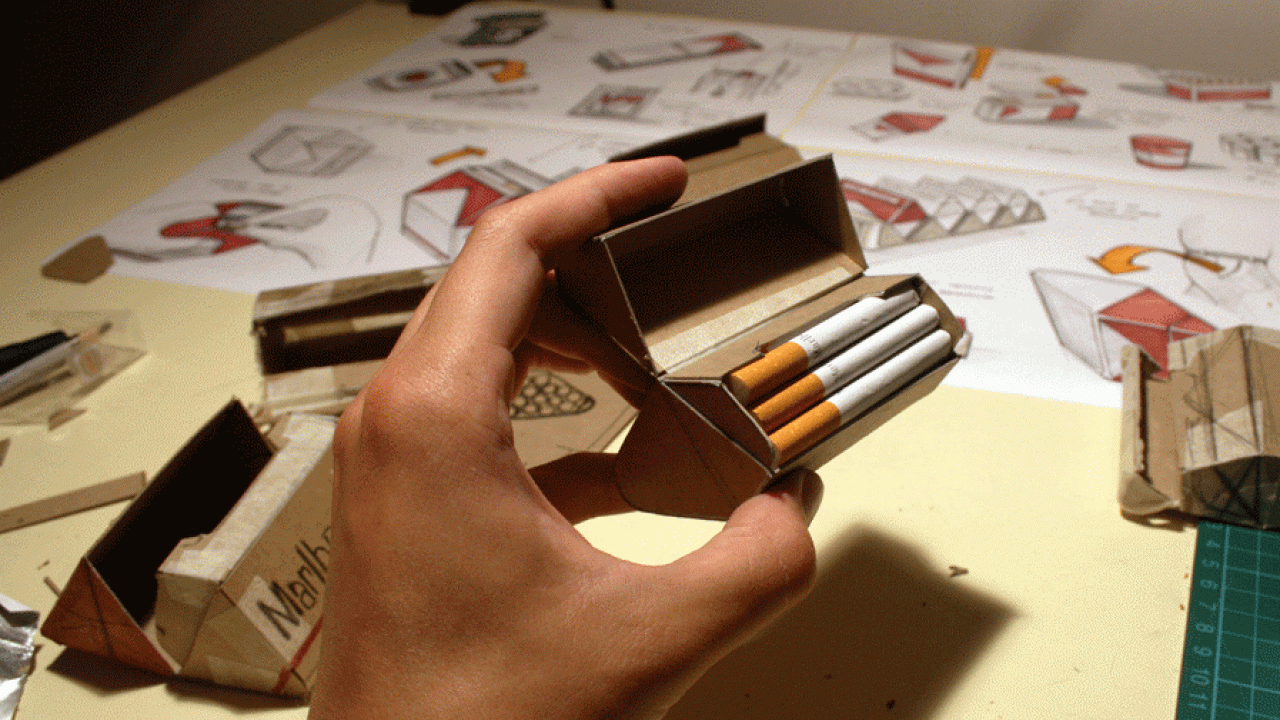Design to annoy

Legislation
Legislation has taken on many forms in markets from the UK to Australia. The UK has brought about changes to the legal age that you can purchase cigarettes, introduced a ban on smoking in public places, increased the requirements for health warnings printed on packaging and enforced the removal of cigarette packets from display in shops in a move to discourage young people from starting to smoke in the first place.
A different view
 To realize this, he came up with several sketched ideas, including an all-black packet described as the “Death Box”, blister packs to display cigarette cartons at the point-of-sale, an elongated packet that would not fit easily into a pocket, cylindrical cartons and packs for half-size cigarettes.
To realize this, he came up with several sketched ideas, including an all-black packet described as the “Death Box”, blister packs to display cigarette cartons at the point-of-sale, an elongated packet that would not fit easily into a pocket, cylindrical cartons and packs for half-size cigarettes.
 Askin finally settled on a diamond shaped carton (pictured, above) as the least efficient and ergonomic design, and created chipboard mock-ups to validate the concept.
Askin finally settled on a diamond shaped carton (pictured, above) as the least efficient and ergonomic design, and created chipboard mock-ups to validate the concept.
Askin is keen to note that his “Design to Annoy” project is only conceptual and that the main message is not against smoking, rather how design can be used to solve problems in unconventional ways.
Stay up to date
Subscribe to the free Label News newsletter and receive the latest content every week. We'll never share your email address.

